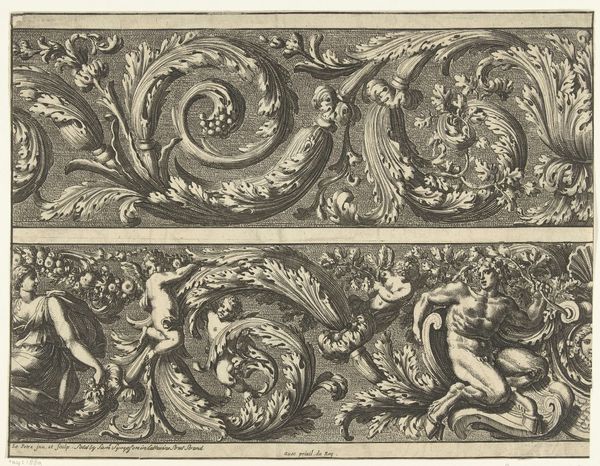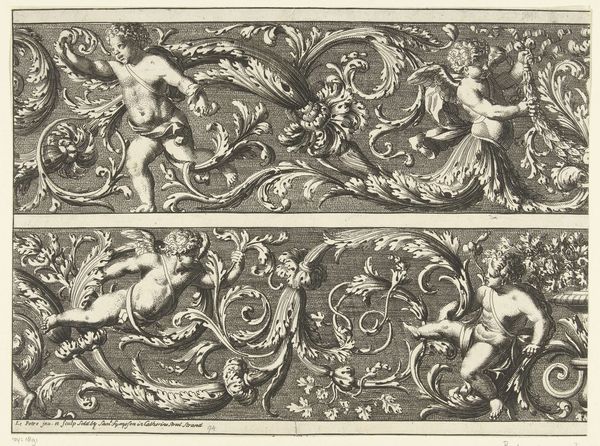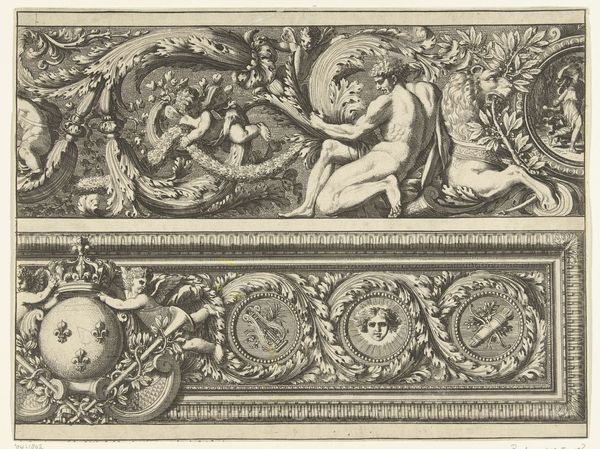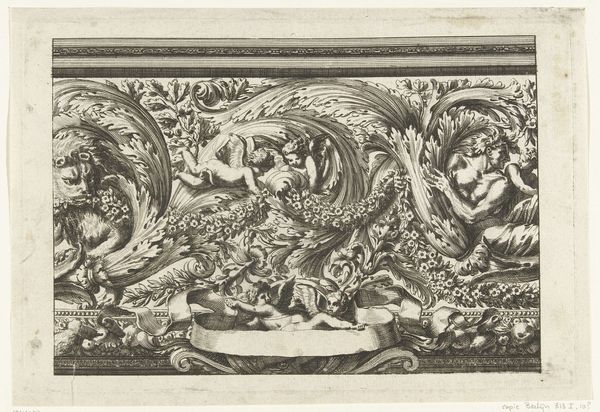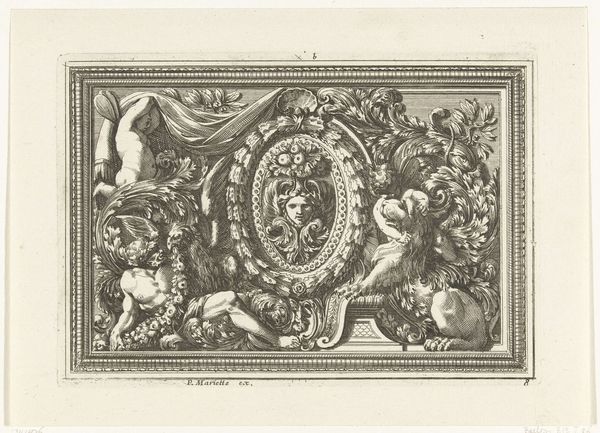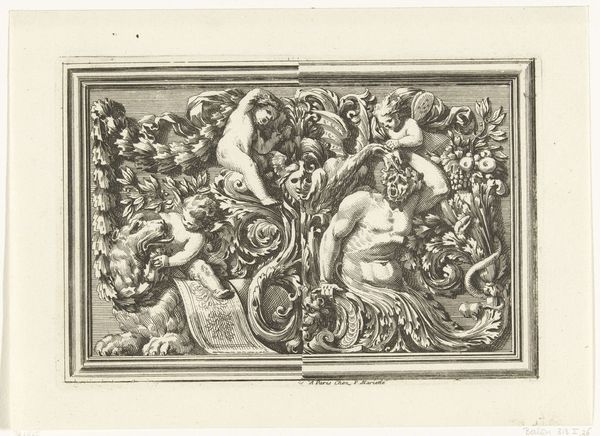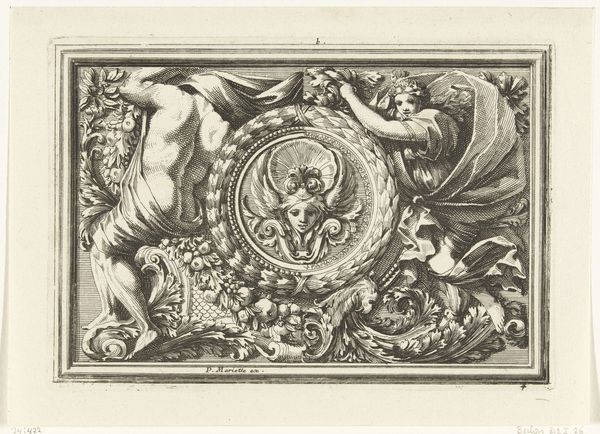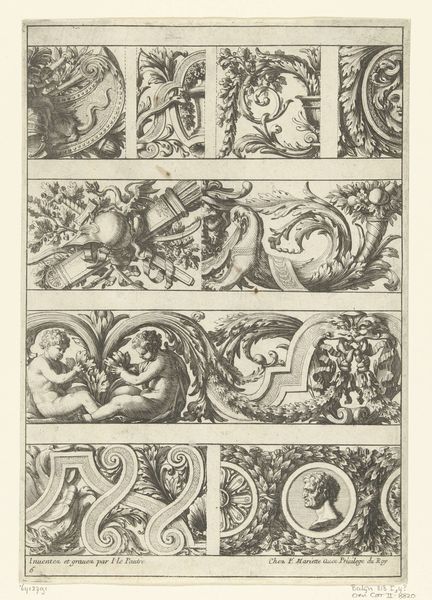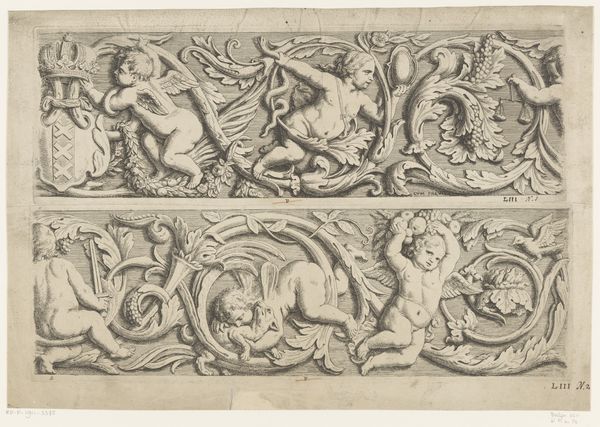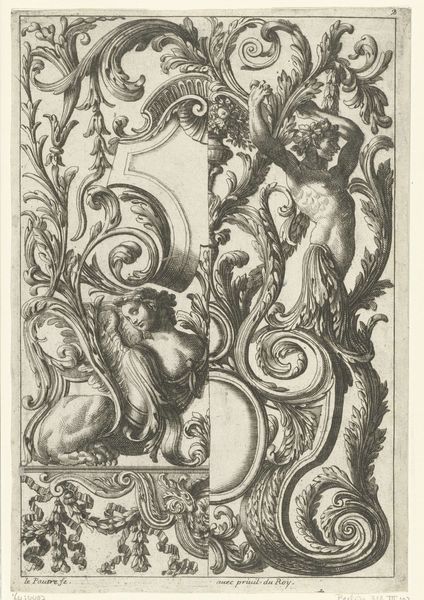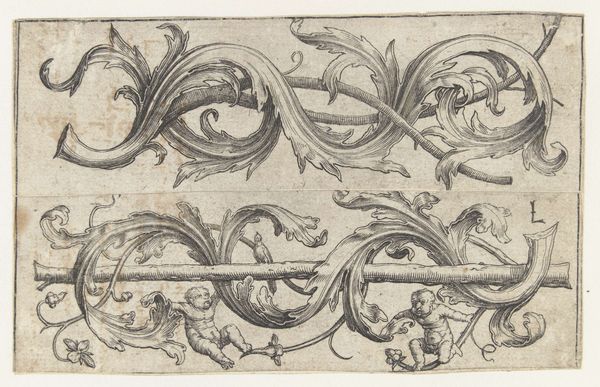
drawing, metal, engraving
#
drawing
#
baroque
#
pen drawing
#
metal
#
figuration
#
line
#
decorative-art
#
engraving
Dimensions: height 217 mm, width 289 mm
Copyright: Rijks Museum: Open Domain
Jean Lepautre made these two friezes with acanthus scrolls sometime in the 17th century, using etching. This process involves coating a metal plate with wax, scratching an image into it, and then using acid to bite the exposed lines, which are then inked and printed. The visual impact relies on the etched line, with its unique capacity to be both delicate and assertive. It is a commercial print, so Lepautre was probably interested in the reproducibility of the medium. The curling acanthus leaves and playful figures were meant to be endlessly remade on demand. Consider the contrast between the inherent qualities of the copperplate and acid, and the lightness that Lepautre achieved with this print. The design resembles the elaborate decoration you would see in plaster or carved in wood. It’s easy to imagine the tremendous skill required to model these forms by hand, and the labor that went into producing them. It’s important to remember that printmaking like this was made in the age of expanding capitalism. It allowed designs to circulate widely, influencing tastes and fueling demand for ornate objects. Looking closely at its material and making, we start to see the wider story this image tells.
Comments
No comments
Be the first to comment and join the conversation on the ultimate creative platform.
